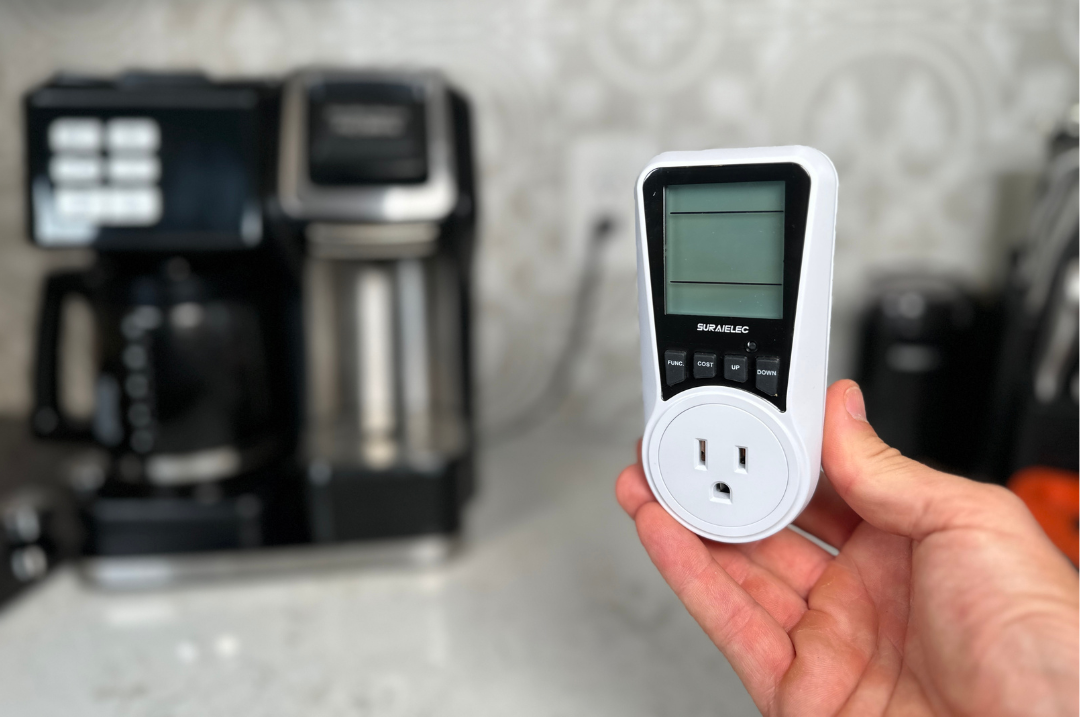In this blog post, we’ll delve into the crucial topic of energy consumption and its role in a well-balanced home powered by solar. Understanding how measuring your appliance energy use works can help you make smarter decisions when designing your overall solar power system. This knowledge helps create a system that meets your needs without unnecessarily consuming energy.
The article is based on a video from my YouTube channel. If you prefer to watch, the video is below, but the instructions continue when you scroll past the video.
Energy Consumption and Its Measurement
Typically, our discussions are about generating energy, such as how to install solar panels on our homes or DIY setups to produce energy. These setups can help offset bills or power an off-grid setup. But today, let’s switch gears and talk about the consumption side of the equation, which is just as vital.
To demonstrate how we measure the energy consumption of our appliances, we’re going to use a simple setup, measuring it on a common household appliance: a coffee maker. This way, we’ll know how much energy a coffee maker uses.
The Old Way: Using a Clamp Meter
In the past, I used a clamp meter to measure the amperage to get an overall sense of energy consumption. This method works under the assumption that the appliance operates on a 120-volt circuit. However, this method can be cumbersome, especially when measuring appliances with inconsistent load over time. The biggest deficiency in this setup is the inability to log the energy consumption over hours, days, or even weeks of use.
The Better Option: Using an Energy Monitor
A more effective solution is using energy monitors, which you can find for as little as $15. They are especially helpful for appliances with inconsistent load over time. An energy monitor allows for more accurate measurement over multiple days, giving you a more accurate understanding of overall energy consumption.
In my case, I use an inexpensive energy watt meter from Amazon. This device is straightforward to use: simply plug it into a receptacle and then plug your appliance into the front side of the monitor.
Setting Up the Energy Monitor
To run a test, start by resetting the meter. The meter can also give you a cost estimation, but you’ll need to set your electricity rate first. In my case, I pay 12 cents per kilowatt-hour (kWh).
Running the Energy Consumption Test
After resetting and setting the cost, we’re ready to run a simple test. For demonstration purposes, I’ll be brewing a single cup of coffee with my coffee maker. Once the brewing starts, you can see various data on the energy monitor, including the power consumption, energy consumed during the brewing cycle (kWh), voltage, hertz, amperage, and even the cost of the energy consumed.
How much energy does a coffee maker use?
After the test, you can see how much energy you’ve consumed during the brewing process. For a single cup of coffee, the energy consumption is about .03 kilowatt-hours or less than a penny. If you’re designing an off-grid setup and trying to calculate how much energy you’ll need, this information will be invaluable. You can estimate how many cups of coffee you’ll brew over a period of time and add that to the energy consumption of your other appliances.
The Long Cycle Test: Brewing a Whole Pot of Coffee
To compare, I ran another test, this time brewing a whole pot of coffee and allowing it to go through a normal cycle of keeping the coffee warm for two hours. The results show a dramatic difference in energy consumption, making this an interesting consideration if you usually brew a full pot but only drink one or two cups.
The Final Results: Single Cup vs Whole Pot
After brewing a whole pot and keeping it warm for about two hours, the total energy consumption was about 0.273 kWh, which is nine times more than brewing a single cup (.03 kWh). Even though we brewed about five times as much coffee, the energy consumption was disproportionately higher because of the hot plate keeping the coffee warm.

Conclusion and Further Considerations
Through the use of an inexpensive energy meter, you can gain a better understanding of your appliances’ energy consumption, allowing you to make smarter decisions when designing your solar power system. For coffee lovers, single-cup brewers or coffee makers with a thermal carafe (which doesn’t require a hot plate to keep coffee warm) can be more energy-efficient choices.
Remember, you can apply this method to any appliance that uses a 120-volt cord. This practice will give you a better understanding of the actual energy consumption of your appliances, which can guide your decisions in a solar setup.
In another post, I’ll be installing an Emporia 16-circuit home energy monitor at my home to track individual circuits at my electrical panel continuously. If you don’t want to miss out on that post, be sure to sign up for the email newsletter or subscribe to my YouTube channel.

